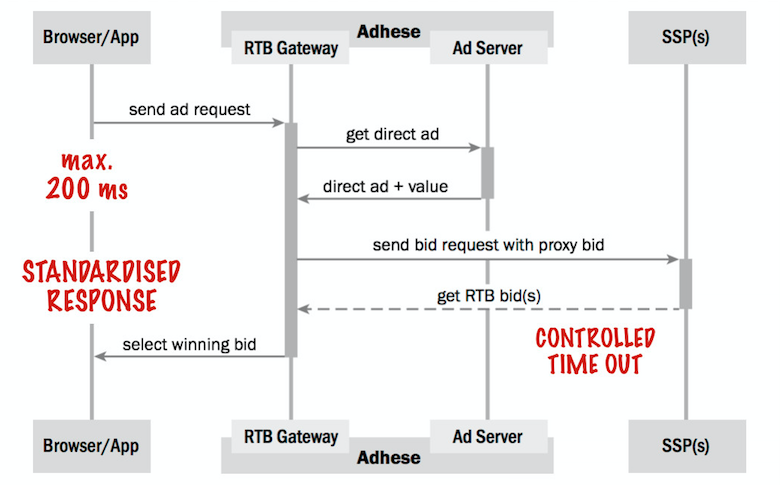The Adhese Gateway now also integrates with Pubmatic as another demand partner in the inventory auction processes, next to the supply-side platform (SSP) of Rubicon.
The Gateway enables publishers to maintain an auction process that is characterized by server-to-server connections for its programmatic efforts. This process is also known as server-side header bidding. It enables a real-time competition between direct sales and the market – optimizing online revenue for every impressions.
By adding another SSP to the auction process, publishers increase competition for their inventory which in turn leads to higher revenue figures per impression and a better fill rate.
In addition, any increase in the number of SSPs does not impact latency as the process occurs server-side and not on the publisher webpage (or client-side).
More about the Adhese Gateway
The traditional header bidding setup is client-side, which means that the user’s browser carries out the ad calls to SSPs. However, when there are too many different SSP integrations, latency increases. Alternatively, the setup of the Adhese Gateway is based upon server-to-server connections. This makes it a very efficient implementation with only one request for all ad types and a standardised response, no matter the ad source. Plus a guaranteed maximum latency through a controlled time-out.

The Adhese Gateway uses the original price from a direct sales campaign as a proxy bid and sends it to the SSP accordingly. This triggers higher bids since a value for the impression is already given. When a proxy bid is not available, a dynamic bottom price can be set that is based upon, for example, previously sold campaigns and prices.
Through a server setup, the Adhese Gateway can also provide access in a controlled way: matching the users of the SSPs with the publisher’s and storing this data in one place for clean user synchronisation. Doing this through a single point enables simpler privacy compliance and publishers can offer users transparency and control over their own settings.
Back